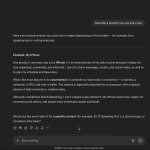As parents, one of the biggest challenges today is keeping children safe online. Apps like WhatsApp have become part of daily life, and kids often want to use them to connect with friends and family. But the question remains: is WhatsApp really safe for children? This guide will help parents understand the risks, safety features, and best practices for managing WhatsApp use, including how tools like Masuk WhatsApp Web and WhatsApp web login play a role.
What Is WhatsApp and Why Do Kids Use It?
WhatsApp is a free messaging app that allows users to send texts, make calls, and share media. Children find it appealing because it’s easy to use, fast, and widely used among their peers. Many kids want WhatsApp because their friends are already on it, and they don’t want to feel left out.
For parents, understanding why WhatsApp is attractive to kids is the first step. It helps you manage expectations and start conversations about safe usage.
Age Requirements and Rules
Officially, WhatsApp requires users to be at least 16 years old in most regions. However, many children under that age still manage to use it. This means parents need to be aware that while the app is not designed for young children, it is often used by them.
Parents should explain to their kids why the age rule exists—it’s mainly to protect them from inappropriate content and online risks.
Main Safety Concerns on WhatsApp
While WhatsApp is convenient, it does raise concerns when used by children. Some of the main risks include:
- Strangers messaging your child: Anyone with their phone number can send a message.
- Exposure to harmful content: Images, videos, or links may not always be safe.
- Group chats: These can expose kids to large groups of people, not all of whom may be trustworthy.
- Privacy issues: Personal details like photos or location may be shared too freely.
Understanding these risks makes it easier for parents to set rules and monitor their child’s activity.
Privacy and Security Features Parents Should Know
The good news is WhatsApp has built-in safety features. These can make it safer for kids when set up correctly.
- End-to-End Encryption: Messages are private and can’t be read by outsiders.
- Two-Step Verification: Adds an extra layer of security during login.
- Blocking and Reporting: Kids can block unwanted contacts and report inappropriate messages.
- Status Privacy Settings: Parents can control who sees their child’s WhatsApp status.
Encouraging your child to use these settings helps reduce risks.
Role of WhatsApp Web in Monitoring
Some parents use Masuk WhatsApp Web (logging into WhatsApp on a computer) to check their child’s activity. With WhatsApp web login, you can see messages in real time, making it easier to monitor chats without always taking your child’s phone.
However, this should be done with trust and open communication. Children should know that monitoring is about keeping them safe, not spying. A healthy balance between privacy and protection is important.
Talking to Your Kids About Safe Use
Technology alone cannot guarantee safety. Conversations with your children are just as important. Here are some tips:
- Be open: Ask your child who they chat with and how they use WhatsApp.
- Set rules: Agree on when and how long they can use the app.
- Discuss risks: Explain why they should never share personal details or click unknown links.
- Encourage honesty: Let them know they can come to you if they feel uncomfortable online.
When kids understand why rules are in place, they are more likely to follow them.
Alternatives for Younger Kids
If your child is too young for WhatsApp, consider safer alternatives designed for kids. Some messaging apps offer stricter controls, parental dashboards, and limited features. These can provide the social connection children want while reducing risks.
Parents can gradually introduce WhatsApp when their kids are older and more responsible.
Balancing Freedom and Safety
It’s natural for children to want independence, and messaging apps are part of that. But as parents, it’s important to balance freedom with protection. Allowing WhatsApp use while keeping an eye on privacy settings, using tools like WhatsApp web login, and having regular discussions can strike the right balance.
The goal is not to ban technology but to teach children how to use it wisely.
Final Thoughts
So, is WhatsApp safe for kids? The answer depends on how it’s used. With risks like stranger contact and inappropriate content, parents need to be cautious. But with safety features, parental guidance, and open communication, WhatsApp can be used more safely.
Lynn Martelli is an editor at Readability. She received her MFA in Creative Writing from Antioch University and has worked as an editor for over 10 years. Lynn has edited a wide variety of books, including fiction, non-fiction, memoirs, and more. In her free time, Lynn enjoys reading, writing, and spending time with her family and friends.















